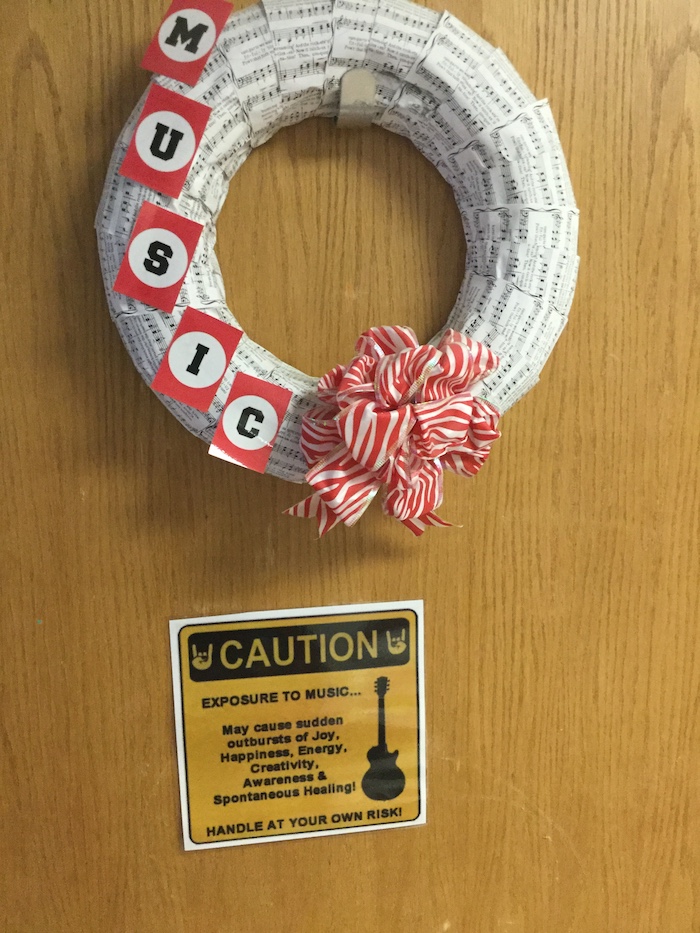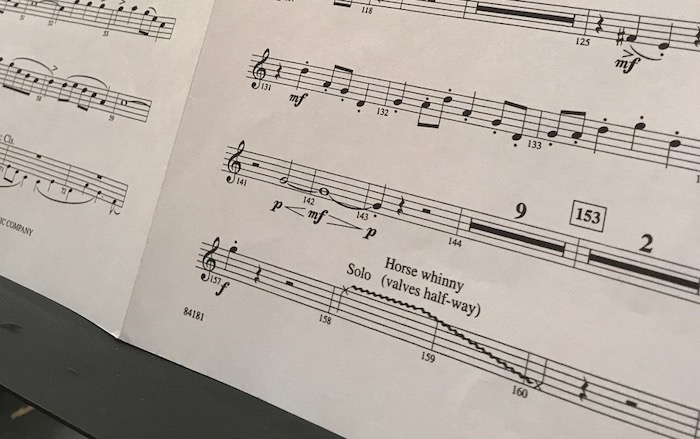Monday, December 4, 2017
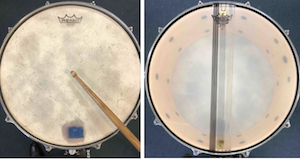 Regular replacement of both top (batter) and bottom (snare side) drumheads is the first step to improving the sound of your concert snare drum. A new set of heads each year is generally ideal. Keep an extra set on hand in case one becomes damaged. For the steps involved in replacing a drumhead, view the Percussion 101 video series produced by the Vic Firth Company online at vicfirth.com/percussion-101-concert-snare. Only heads designed specifically for concert batter or snare side applications are to be used.
Regular replacement of both top (batter) and bottom (snare side) drumheads is the first step to improving the sound of your concert snare drum. A new set of heads each year is generally ideal. Keep an extra set on hand in case one becomes damaged. For the steps involved in replacing a drumhead, view the Percussion 101 video series produced by the Vic Firth Company online at vicfirth.com/percussion-101-concert-snare. Only heads designed specifically for concert batter or snare side applications are to be used.
Another critical step is to properly adjust the head tension. When the batter head is too loose, the rebound of the stick lacks sufficient energy and feels spongy to the performer. By raising the pitch of the drum to approximately concert A, the sticks will have a healthy amount of rebound. The snare side head will need the same amount of tension or greater than the batter head. Over time, heads will loosen slightly and require periodic retuning. Tighten in only small amounts. Keep tension rods greased adequately.
Snare Tension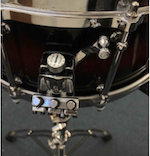 Good heads with the correct head tension is a great start. Now is the time to set the snare tension. Begin by ensuring the snares sit smoothly against the bottom head when engaged. If needed, adjust the snare cord to realign. Using the adjustment knob, loosen the snares, then slowly add tension while striking the center of the head at a soft dynamic. Once a crisp sound is achieved, move toward the rim and continue as needed. Expect longer snare response and ring when checking the edge sound. It may be helpful to upgrade your snares. Options include wire coil, steel cable, coated cable, or combinations of these and others.
Good heads with the correct head tension is a great start. Now is the time to set the snare tension. Begin by ensuring the snares sit smoothly against the bottom head when engaged. If needed, adjust the snare cord to realign. Using the adjustment knob, loosen the snares, then slowly add tension while striking the center of the head at a soft dynamic. Once a crisp sound is achieved, move toward the rim and continue as needed. Expect longer snare response and ring when checking the edge sound. It may be helpful to upgrade your snares. Options include wire coil, steel cable, coated cable, or combinations of these and others.
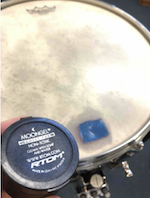 The decay in sound when striking a properly tuned snare drum may necessitate a slight degree of muffling based on the acoustics in the rehearsal/performance space. If too much muffling is applied--whereby all ring has been eliminated--then a choked sound will be the result. Instead, strive for a slight amount of ring, which is part of what contributes to a concert snare drum's characteristic sound. Options for muffling include products like MoonGel Damper Pads by RTOM or a folded handkerchief.
The decay in sound when striking a properly tuned snare drum may necessitate a slight degree of muffling based on the acoustics in the rehearsal/performance space. If too much muffling is applied--whereby all ring has been eliminated--then a choked sound will be the result. Instead, strive for a slight amount of ring, which is part of what contributes to a concert snare drum's characteristic sound. Options for muffling include products like MoonGel Damper Pads by RTOM or a folded handkerchief.
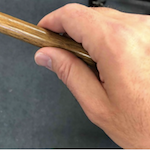
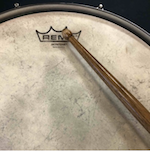 Training students to understand the difference between striking a high-tension marching drum and a concert drum is another crucial step. Remind students to maintain an open fulcrum with a relaxed hand. Harness the maximum amount of energy from the drumhead to produce the most resonant sound. Utilize the center of the head for dynamic levels at or above mezzo forte. Move to the edge for dynamic levels at or below mezzo piano. Insist that students strike with beads as close together as possible. Rolls and ruffs are closed (buzzed) in almost all cases. Ask students to balance the sound of the snare with other instruments in the section and with the entire ensemble.
Training students to understand the difference between striking a high-tension marching drum and a concert drum is another crucial step. Remind students to maintain an open fulcrum with a relaxed hand. Harness the maximum amount of energy from the drumhead to produce the most resonant sound. Utilize the center of the head for dynamic levels at or above mezzo forte. Move to the edge for dynamic levels at or below mezzo piano. Insist that students strike with beads as close together as possible. Rolls and ruffs are closed (buzzed) in almost all cases. Ask students to balance the sound of the snare with other instruments in the section and with the entire ensemble.
Secure adequate storage for the drum along with a protective case for transport to minimize the risk of accidentally damaging a head or any other part of the instrument.
 | Gregory Lyons is Associate Professor of Music, Head of Instrumental Music Education, and Assistant Director of Bands at Louisiana Tech University. He earned degrees at Wheaton College (BME), Central Michigan University (MM), and The Ohio State University (DMA). He is past-president and current treasurer of the Louisiana Percussive Arts Society. Dr. Lyons proudly endorses Grover Pro Percussion, Vic Firth Sticks and Mallets, and SABIAN Cymbals. |
Click the picture for an awesome "horse-whinny" tutorial by John Evans from Webb City, MO.
